The animal kingdom is filled with extraordinary examples of intelligence, creativity, and resourcefulness, but few are as impressive as the male Palm Cockatoo’s unique courtship ritual. Native to the rainforests of northern Australia, New Guinea, and nearby islands, this striking bird has developed one of the most sophisticated tool-using behaviors ever documented in non-human animals. Unlike typical bird courtship displays that rely solely on plumage or song, the male Palm Cockatoo fashions “drumsticks” from twigs and branches, creating what researchers have dubbed “ladder structures” to both communicate and impress potential mates. This remarkable behavior represents one of the few known examples of tool creation in the avian world and offers fascinating insights into avian intelligence and the evolution of complex behaviors.
The Magnificent Palm Cockatoo: An Introduction
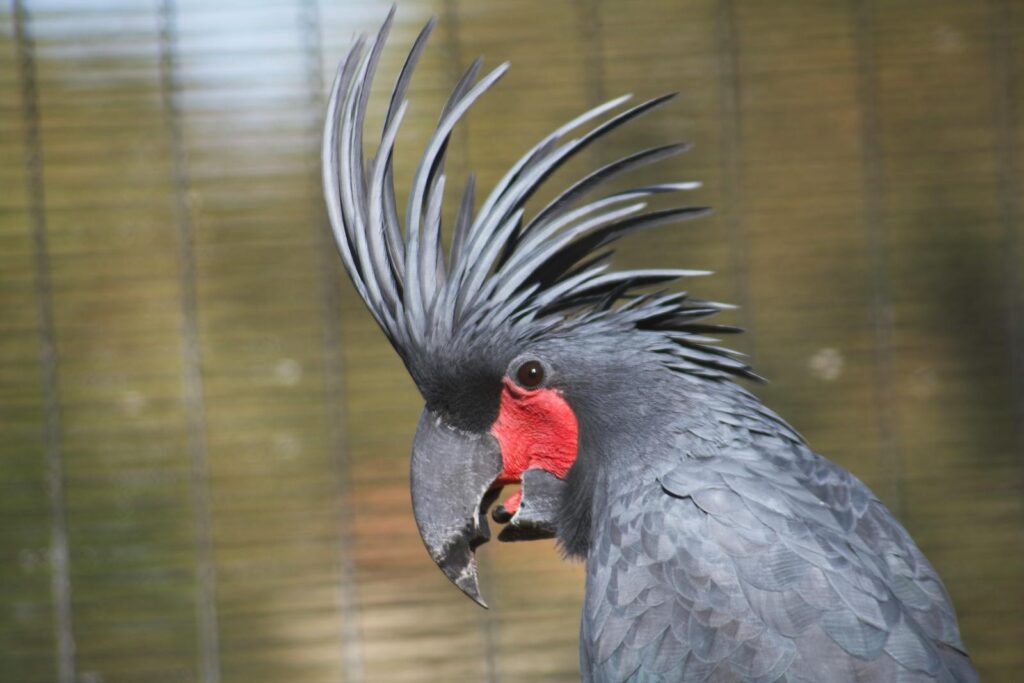
The Palm Cockatoo (Probosciger aterrimus), also known as the Goliath Cockatoo, stands as one of the largest and most distinctive members of the parrot family. With its impressive size of up to 60 centimeters in length and wingspan reaching nearly one meter, this magnificent bird commands attention wherever it appears. Its most striking features include a dramatic crest of feathers that can fan out expressively, powerful beak capable of cracking open the toughest nuts, and distinctive red facial patches that change color depending on the bird’s emotional state. The Palm Cockatoo’s plumage is predominantly charcoal-black with a bluish sheen, creating a dramatic appearance that helps it stand out in its tropical forest habitat while simultaneously allowing it to blend into shadowy canopies when necessary.
Distribution and Habitat Preferences
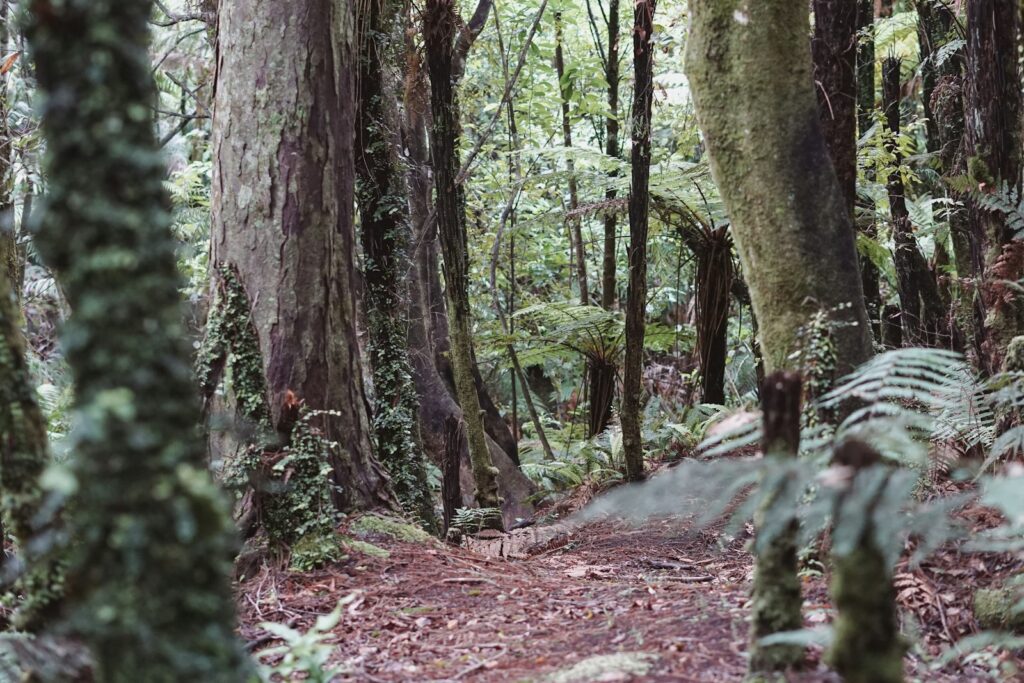
Palm Cockatoos occupy a relatively limited range that includes the Cape York Peninsula in far northern Australia, New Guinea, and several neighboring islands including Aru and Western Papuan islands. Within these regions, they demonstrate a strong preference for lowland rainforests, particularly those containing their namesake palm trees which provide both food and nesting opportunities. The birds favor forest edges and clearings where emergent trees provide vantage points for vigilance and territorial displays. Their habitat requirements are quite specific, needing a combination of old-growth forests with hollow-bearing trees for nesting, diverse food sources, and sufficient dead wood for their unique tool-creating behaviors. This habitat specificity contributes to their vulnerability to deforestation and habitat fragmentation, factors that have led to their classification as vulnerable by conservation authorities.
Evolutionary History and Unique Adaptations
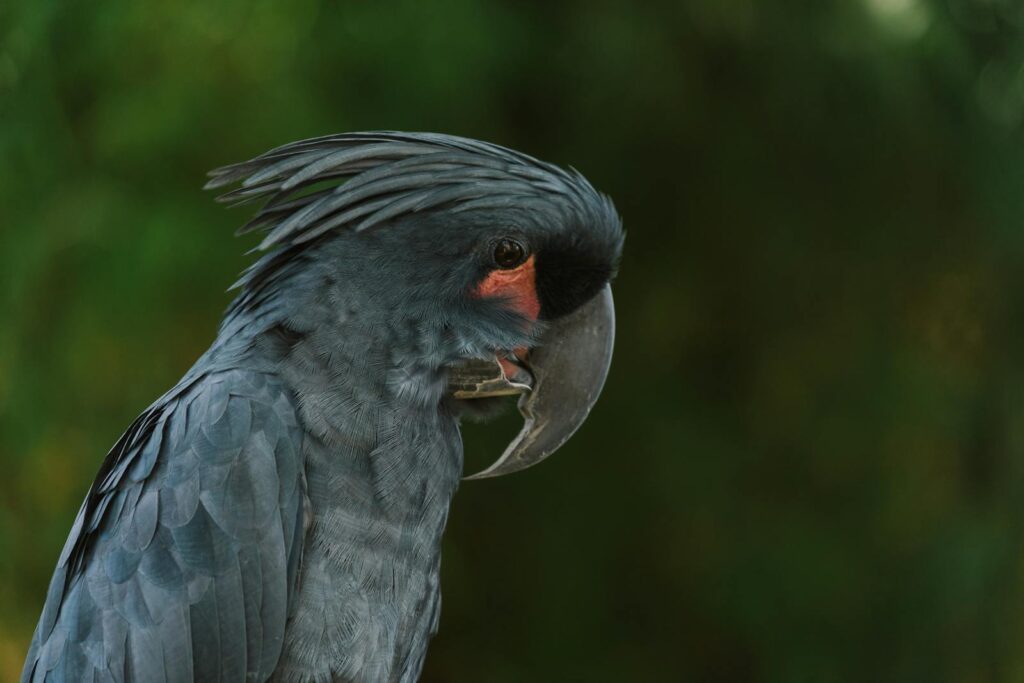
The Palm Cockatoo represents the sole member of its genus Probosciger, having diverged from other cockatoo lineages approximately 40 million years ago, making it one of the most ancient cockatoo species alive today. This long evolutionary isolation has allowed the species to develop numerous unique adaptations not seen in other parrots. Their massive bills have evolved specialized muscles and lever mechanisms that generate extraordinary bite forces, enabling them to access food sources unavailable to other birds. Unlike many parrots that use their tongues extensively during feeding, Palm Cockatoos rely heavily on their powerful bills and dexterous feet when processing food. Perhaps most fascinating is their neurological development, which has produced the advanced cognitive abilities necessary for their sophisticated tool use – a trait that reflects convergent evolution with certain primates despite vast differences in their evolutionary histories.
The Discovery of Twig Ladder Construction

The remarkable twig ladder-building behavior of Palm Cockatoos was first documented scientifically in the early 1990s by ornithologist Stephen Garnett during fieldwork in Australia’s Cape York Peninsula. Initial observations were met with skepticism from the scientific community, as deliberate construction behaviors of this complexity were previously unknown in birds outside of nest-building contexts. Subsequent long-term studies led by Dr. Christina Zdenek and Professor Robert Heinsohn provided comprehensive documentation of the behavior, including video recordings that captured the entire construction process from twig selection to finalized structures. Their groundbreaking research, published in prestigious scientific journals including Science and Current Biology, conclusively demonstrated that the behavior was intentional, culturally transmitted, and served specific communicative functions within Palm Cockatoo societies. This discovery fundamentally altered our understanding of avian cognitive capabilities and tool use in the animal kingdom.
The Art of Twig Selection
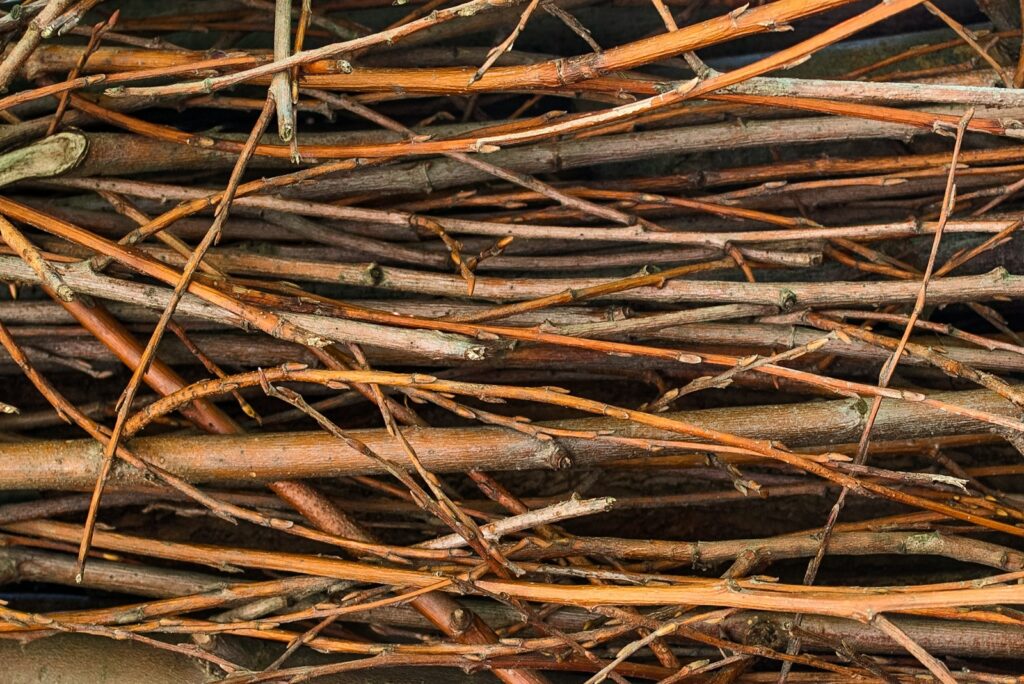
The male Palm Cockatoo demonstrates remarkable selectivity when choosing materials for his ladder constructions, showing preferences that suggest a sophisticated understanding of structural properties. Observations reveal that males typically spend between 10-25 minutes carefully examining and testing potential twigs before making selections, focusing primarily on hardwood species with straight sections and appropriate diameter-to-length ratios. They show clear preference for fresh green branches that retain flexibility while offering sufficient strength, often harvesting these directly from living trees rather than collecting fallen materials. Researchers have documented males rejecting dozens of potential twigs before selecting those meeting their specific criteria, sometimes traveling considerable distances to obtain preferred materials. This highly selective process demonstrates an impressive ability to mentally represent the finished structure and choose materials with properties appropriate for the intended construction, reflecting cognitive abilities previously attributed only to mammals.
The Construction Process Revealed

The ladder-building process follows a surprisingly systematic and deliberate sequence that suggests genuine planning capabilities. The male typically begins by selecting a flat, exposed horizontal branch or fallen log that will serve as the foundation and provide acoustic properties for later drumming displays. Using his powerful beak, he carefully trims the selected twigs to appropriate lengths, removing side branches and occasionally stripping bark to create more uniform building elements. The actual construction begins with the placement of two parallel twigs as base rails, followed by the precise positioning of crosspieces at relatively regular intervals, creating the distinctive ladder-like appearance. During assembly, the bird frequently pauses to test the stability of the structure, making adjustments and occasionally replacing pieces that don’t fit properly. The entire construction process typically requires 1-3 hours of focused effort, with the resulting structures ranging from 15-40 centimeters in length depending on the individual bird and available materials.
Drumming: The Musical Purpose of the Ladders
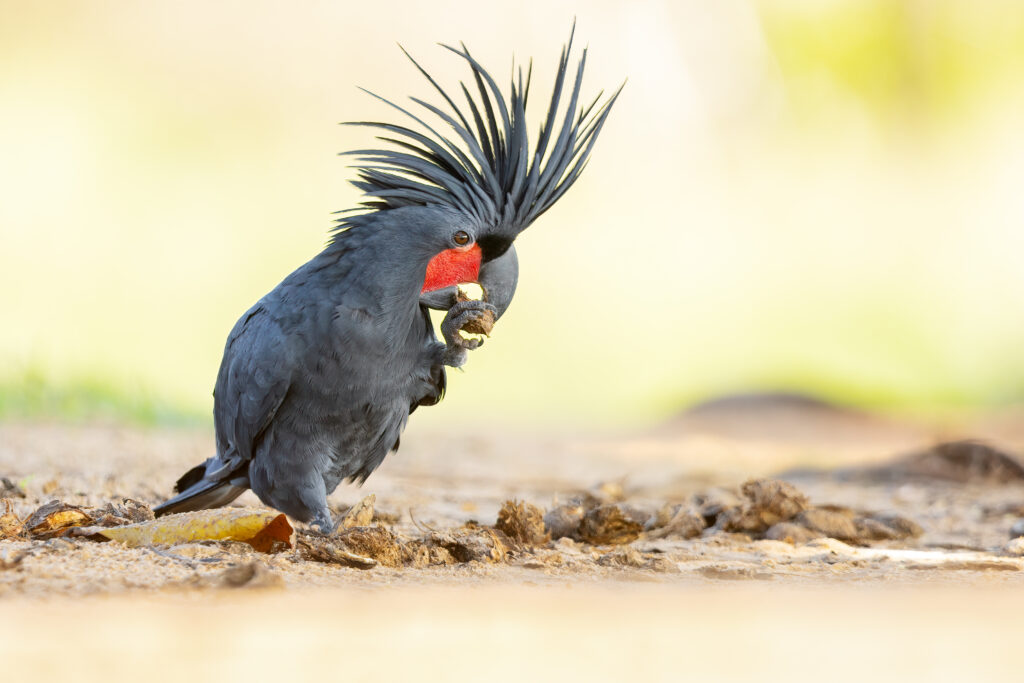
The primary function of these remarkable twig ladders becomes apparent once construction is complete, as they serve as sophisticated percussion instruments for the male’s drumming displays. Using specially prepared drumsticks crafted from small branches stripped of leaves and bark, the male produces complex rhythmic patterns by striking the rungs of his ladder creation. Each male develops a distinctive drumming signature characterized by specific tempo, rhythm patterns, and dynamics that may serve as individual identification within the social group. The acoustic properties of the ladder construction amplify these sounds, carrying them considerable distances through the forest canopy and effectively broadcasting the male’s presence and quality to potential mates. This percussive communication represents one of the few known examples of instrumental music-making in the animal kingdom outside of humans, positioning the Palm Cockatoo as a unique biological model for studying the evolution of musical behaviors.
Cognitive Implications: Bird Genius at Work

The ladder-building behavior of Palm Cockatoos requires cognitive abilities far exceeding what was previously thought possible in birds, challenging long-held assumptions about avian intelligence. The behavior demonstrates true construction capabilities distinct from instinctive nest-building, involving mental representation of the intended structure, sequential planning, fine motor control, and evaluation of outcomes. Neurological studies have revealed that Palm Cockatoos possess an enlarged nidopallium, a brain region associated with higher cognitive functions in birds and considered analogous to the mammalian prefrontal cortex. Experimental studies using problem-solving tasks confirm that these birds exhibit advanced causal reasoning, demonstrating an understanding of physical principles like gravity, support, and structural stability. Perhaps most remarkably, Palm Cockatoos show individual variation in construction techniques and drumming patterns, suggesting the presence of cultural transmission and potentially rudimentary artistic expression – qualities once considered uniquely human.
Courtship and Female Selection Criteria
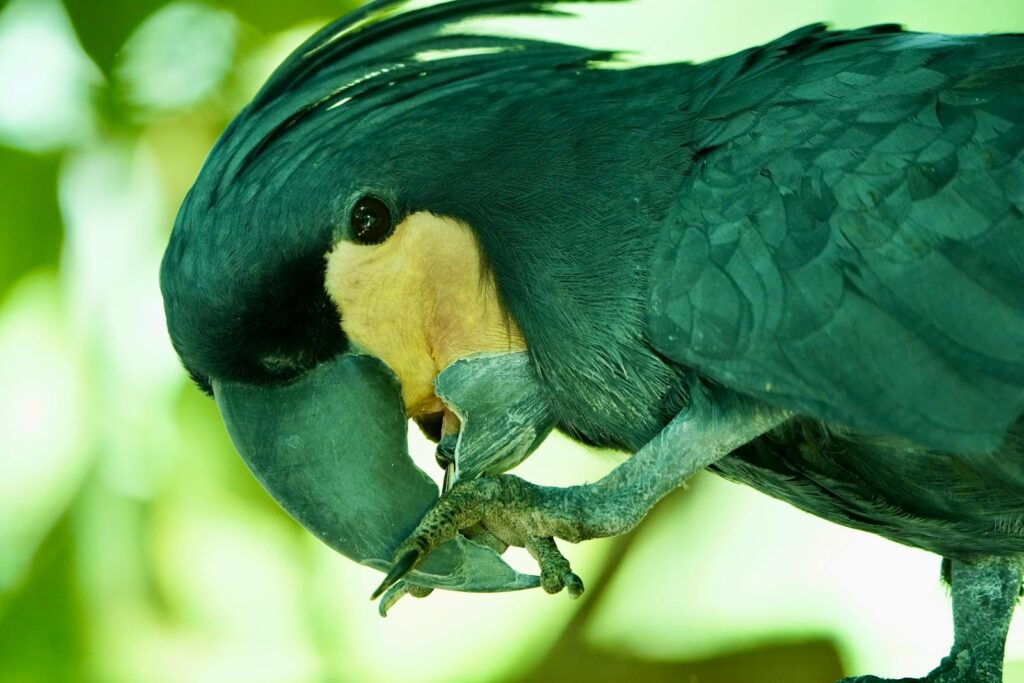
The elaborate ladder constructions and subsequent drumming performances serve as key components in a complex courtship ritual aimed at impressing notoriously selective female Palm Cockatoos. Field studies have revealed that females observe multiple males before choosing a mate, with particular attention paid to both the quality of ladder constructions and the complexity of drumming performances. Females show measurable preference for males that produce more intricate ladder structures with regular spacing and greater stability, suggesting they use construction skill as a proxy for overall genetic quality. The drumming component appears equally important, with females favoring males capable of producing more complex rhythmic patterns maintained consistently over longer durations. This sophisticated mate selection process has driven the evolution of increasingly elaborate construction and performance abilities, creating a fascinating example of sexual selection promoting the development of cognitive traits and potentially art-like behaviors.
Cultural Transmission and Learning

One of the most fascinating aspects of Palm Cockatoo ladder building is the evidence suggesting cultural transmission of these skills across generations, a phenomenon rare in the animal kingdom outside of primates. Juvenile males do not innately possess construction abilities but instead develop them through a prolonged learning process involving observation of established adults. Young males spend significant time watching experienced builders, often following particular individuals who serve as de facto mentors during their development. Researchers have documented distinct regional “styles” in ladder construction techniques, with observable differences in preferred materials, structural elements, and assembly methods between geographically separated populations. These regional variations persist across generations despite genetic exchange between populations, providing compelling evidence for true cultural transmission. This cultural dimension of tool use places Palm Cockatoos among a very select group of animals demonstrating cultural learning, joining certain cetaceans, primates, and a handful of other bird species.
Conservation Challenges and Threats

Despite their remarkable cognitive abilities, Palm Cockatoos face significant conservation challenges that threaten their survival across their range. Their extremely slow reproductive rate – producing just one egg every two years with only a 30-40% success rate – makes populations highly vulnerable to even modest increases in mortality. Habitat destruction represents the most immediate threat, with logging and agricultural conversion eliminating the old-growth forests containing the hollow-bearing trees essential for nesting. Mining operations in Australia’s Cape York Peninsula and expansive palm oil plantations in New Guinea have fragmented critical habitat corridors necessary for genetic exchange between subpopulations. The species also faces pressure from illegal wildlife trafficking, as their distinctive appearance and intelligence make them highly sought after in the exotic pet trade despite international protection. These combined threats have resulted in a steady population decline, with current estimates suggesting fewer than 20,000 individuals remain in the wild.
Research Challenges in Studying These Elusive Birds

Scientific study of Palm Cockatoo ladder-building behavior presents extraordinary challenges that have limited our understanding despite decades of interest. Their remote rainforest habitat features difficult terrain, extreme weather conditions, and limited infrastructure, creating logistical obstacles for sustained research efforts. The birds themselves present additional challenges, being naturally wary with excellent detection abilities that allow them to spot observers long before humans become aware of their presence. Their low population density means that researchers may need to monitor vast areas to document sufficient instances of ladder-building behavior, often requiring teams to navigate through kilometers of dense forest daily in search of active individuals. Modern research increasingly relies on autonomous recording technologies, including motion-triggered cameras and acoustic monitoring devices, allowing for non-invasive observation while minimizing the human presence that might alter natural behaviors. Despite these challenges, dedicated research teams continue to expand our understanding of these remarkable birds and their unique cultural practices.
Future Research Directions and Unanswered Questions
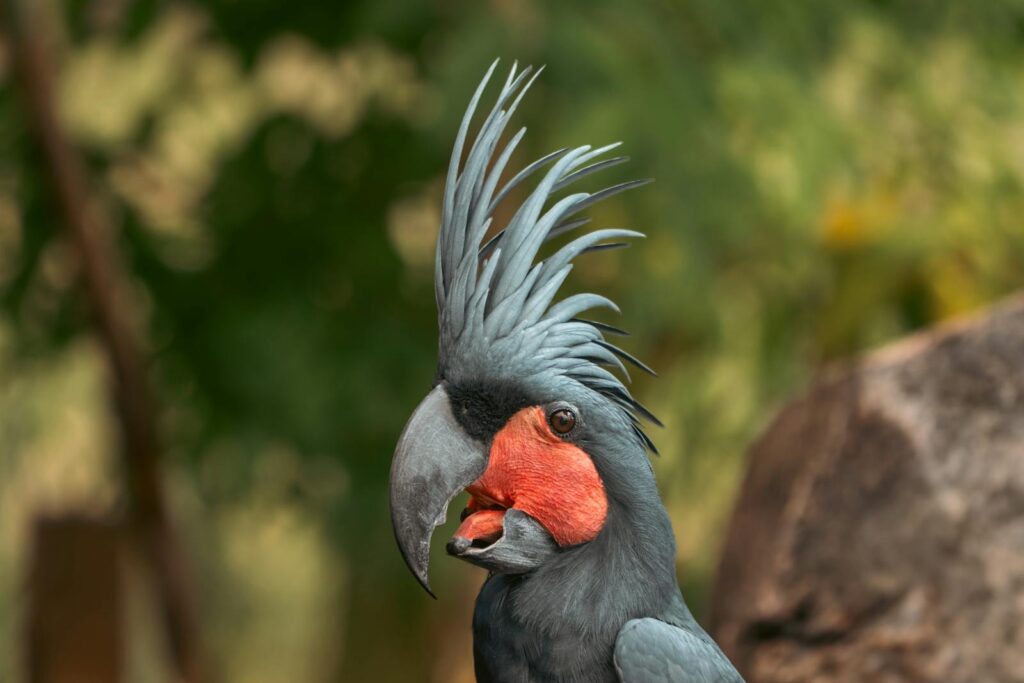
Despite significant advances in our understanding of Palm Cockatoo ladder building, numerous questions remain unanswered and represent exciting frontiers for future research. Scientists are particularly interested in exploring the neurological basis of their construction abilities, using non-invasive imaging techniques to understand how their brains process spatial information and sequential planning tasks. Another promising research direction involves investigating potential preference for specific acoustic properties in their construction materials, determining whether males select twigs partly based on their sound-producing qualities. Long-term studies are needed to document the complete development trajectory of ladder-building skills, from earliest attempts through mastery, providing insights into the learning process. Additionally, comparative studies examining potential precursor behaviors in related cockatoo species could illuminate the evolutionary pathway that led to this extraordinary behavior. Each of these research directions promises to deepen our understanding not only of Palm Cockatoos but of the broader evolutionary foundations of tool use, construction behavior, and possibly even the origins of music.
The male Palm Cockatoo’s remarkable ability to construct twig ladders represents one of nature’s most fascinating examples of avian intelligence and cultural behavior. Far more than simple nest-building, this complex process of material selection, structural assembly, and musical performance demonstrates cognitive abilities once thought impossible in birds. As we continue to study these extraordinary creatures, they challenge our understanding of animal cognition and blur the lines between instinctive behavior and creative expression. The Palm Cockatoo stands as a powerful reminder that intelligence has evolved along multiple pathways in the animal kingdom, and that the capacity for tool use, cultural learning, and perhaps even artistic expression extends well beyond our own species. As these magnificent birds face mounting conservation challenges, understanding and preserving their unique behavioral traditions becomes not just a scientific priority but an ethical imperative to protect one of nature’s most remarkable evolutionary achievements.
